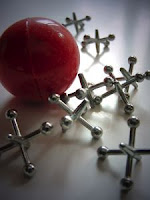Insulation Question
11 posts
• Page 1 of 1
Insulation Question
I was wondering about the insulation that I want to put into the teardrop. From looking at build pictures it seems that everyone uses some type of sheet insulation. what I was wondering was is there a reason why no one uses regular fiberglass insulation? the stuff that looks like cotton candy? Since no one uses it I am guessing that there is a good reason why, but I can't think of it. Can some of you more experienced types enlighten me?
Eric
_________________
~If I fall flat on my face, at least I am moving forward.~
_________________
~If I fall flat on my face, at least I am moving forward.~
-

egjacks - Teardrop Master
- Posts: 160
- Images: 3
- Joined: Tue Apr 26, 2011 6:52 pm
- Location: Tri-Cities Washington
Good Question! Anyone? Anyone?...
For my fourpence worth: The Pink Batts fibreglass was too floppy (wouldn't stay in position for long), the 'R' value too low, and the long time sogginess if it got wet didn't enthuse me.
The sheet poly (or similar) bettered all of those 'problems' for me & additionally allowed a channel to support the electric wires where required thru the panels. It also prvide a measure of support for the Fibreglass cladding I used.
For my fourpence worth: The Pink Batts fibreglass was too floppy (wouldn't stay in position for long), the 'R' value too low, and the long time sogginess if it got wet didn't enthuse me.
The sheet poly (or similar) bettered all of those 'problems' for me & additionally allowed a channel to support the electric wires where required thru the panels. It also prvide a measure of support for the Fibreglass cladding I used.
- DezPrado
- Teardrop Master
- Posts: 137
- Images: 8
- Joined: Thu Sep 20, 2007 2:46 am
- Location: Blenheim New Zealand


